All About Cats - The Musical
Return to Home Page / Cat Home Page / Cat Book Page
La Chatte Blanche
by Adophe Adam who also composed 'Giselle'
French composer Adolphe Adam was born in Paris on July 24, 1803 and died there on May 3, 1856. He was the son of a musician who did his best to dissuade him from following the same career; but he was eventually allowed to enrol at the Paris Conservatoire, where he studied under Boieldieu. After helping Boieldieu to orchestrate the overture to his opera La Dame Blanche in 1825, he came to the notice of the Opera-Comique and had his first one-act opera Pierre et Catherine produced there in 1829. His brother-in-law, Francois Laporte, was musical director at Covent Garden and through him a couple of Adam's works were staged there in 1832. Up to then he had written in the conventional opera-comique style, but in La Chalet (1834) he wrote what is considered to be the first true French operetta, light and frivolous with music nearer to the popular vaudeville idiom. The opera which established his reputation and has been most frequently performed is Le Postillon de Longjumeau (1836): the aria "Mes amis, ecoutez l'histoire" has remained a tenor favourite. In 1844 he was elected a Member of the Institute, in 1849 professor of composition at the Conservatoire. He died suddenly seven years later. His reputation during his lifetime was not limited to his own country. He wrote ballets for London, Berlin and St. Petersburg, which capitals he also visited personally. The ballets which brought him some of his greatest successes were Faust ; La Fille du Danube; La Jolie Fille de Gand, and especially Giselle .
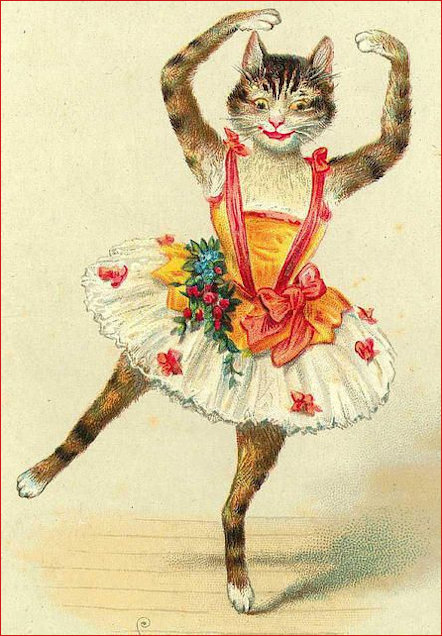
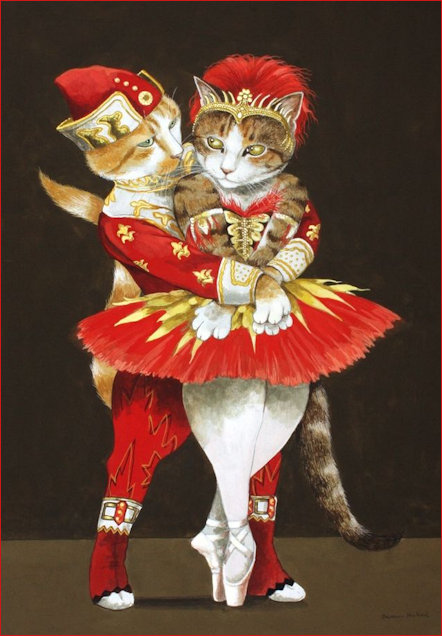
Imagery showing cats in imaginary balletic poses
Adam attempted four kinds of dramatic composition: (1) grand opera, in which he utterly failed; (2) ballet, in which he produced some charming melodies; (3) comic opera, the one and only real domain of his talent; (4) incidental music for nearly thirty plays, which is ephemeral. He also wrote church music, pianoforte pieces and songs.
Richard en Palestine is considered his most successful grand opera; Giselle, his most successful ballet; and Le Postillon de Longjumeau, his most successful comic opera. Source : © Copyright 2003-2007 Ballet Theatre Foundation, Inc. All rights reserved.
History
Described as an 'English Pantomime' in 14 tableaux first performed in Paris in the Théâtre des Nouveautés - Salle de la Bourse on 25th July 1830
Set Designed by Pierre-Luc Charles Cicéri | Music by Adolphe Adam and Casimir Gide
Author(s) : Adam, Adolphe (1803-1856) Composer & Gide, Casimir (1804-1868). Composer
Collaborateur(s) technico-artistique(s) : Cicéri, Pierre-Luc-Charles (1782-1868). Designer
The main creative players in the inception of La Chatte Blanche in the 1830s
Adam’s work as a composer began with providing material for vaudevilles at venues such as Théâtre du Gymnase. Around 1830, he began making a name for himself in France with a one-act opera Pierre et Catherine and the ballet La Chatte Blanche. His first significant international success came in 1836 with the comic opera, Le Postillon de Lonjumeau (The Coachman of Lonjumeau).
Very little of this little ballet exists other than reference is always made to it whenever Adam's work is quantified - so the few visual elements that exist are shown here :
Detail on the original sketch of the set design (see below)
A Rustic Room and Garden is the setting for at least one of the 14 tableaux
Close up of the intricate sketch described as Watercolour, pen and pencil; 293 x 442 mm
On the rear of the 'Chatte Blanche' sketch this design for the backcloth of Act 1 of Alexander Duval's Tasse described as 'in the romantic' style - all the above images are the courtesy & © if the Bibliothèque nationale de France
I have tried to see if I can find any comparable images to see if I could conjure up a 'cat' costume of the 1830s but the costumes of the day were very prosaic in many ways, even playing a swan there was a feathered headdress, images of feathers in layers on the dress itself, butterflies were treated with diaphanous wings and glitter, Coppélia depended on her face make up making her look like a doll and a still wig or body movements - so I have found an image which describes everything I have come across :
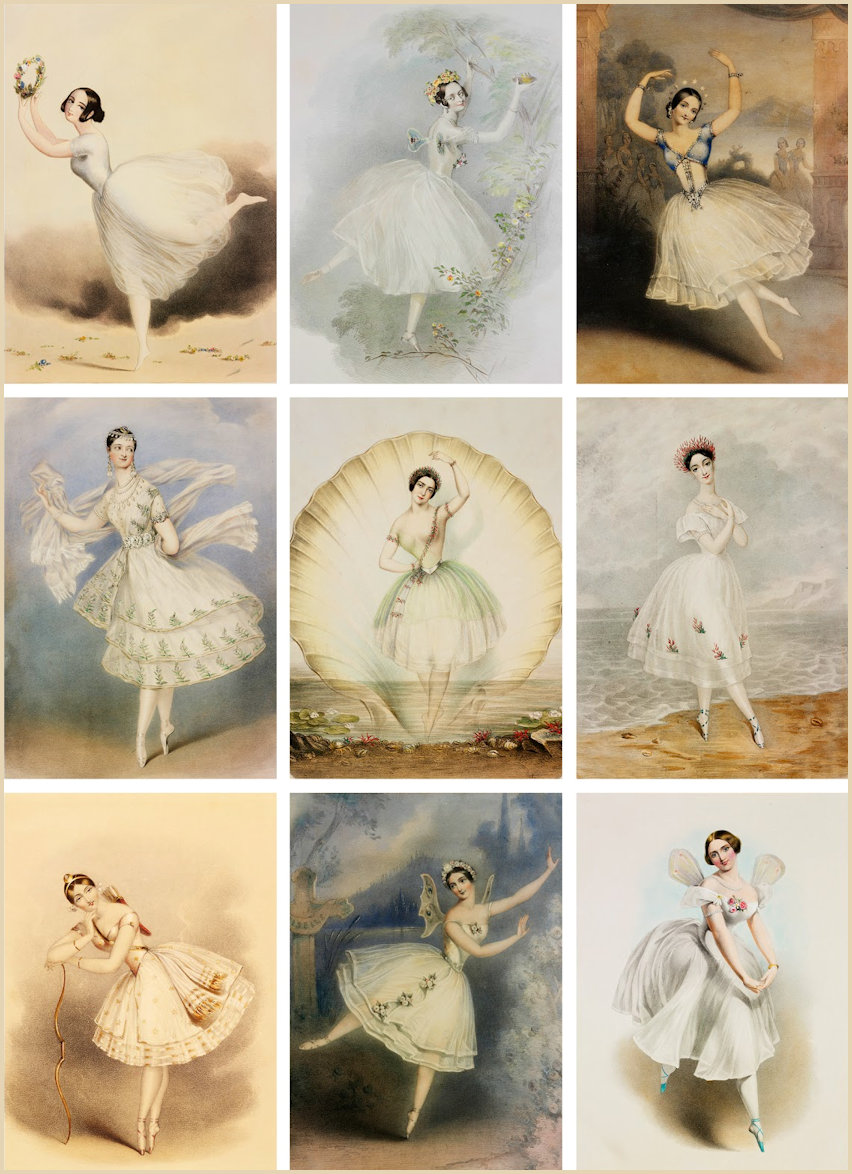
Image courtesy of jodieleedisigns
T S Eliot's 'Old Possum's Book of Practical Cats'
By Thomas Stearns Eliot (1886-1965) - Nobel Prize Winner for Literature - 1948
Surely one of the most famous poems about cats ever written and converted into a spectacular musical simply called 'Cats' by a great fan of felines - Andrew Lloyd Webber.
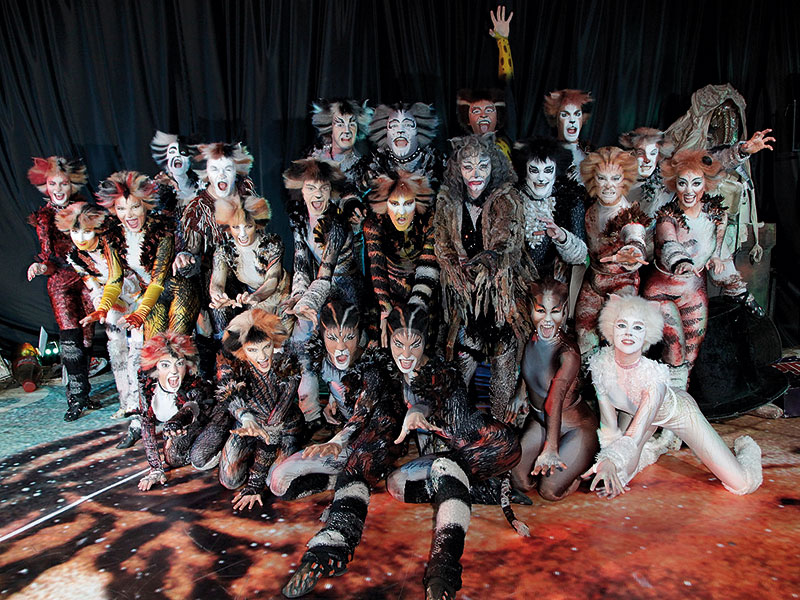
The costumes for the cast of Cats are out of this world improving with every production - this image courtesy of Germany's Musical World
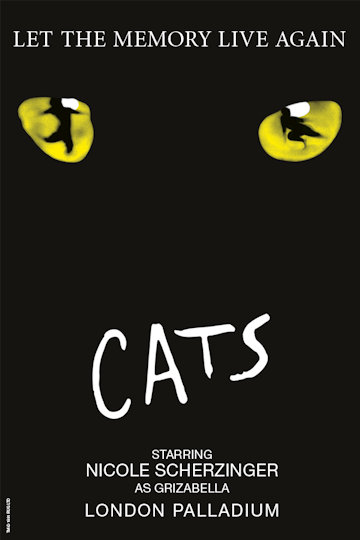
Simplistic Splendour - recognisable anywhere - this version at The Palladium in London
Back to Top / Return to Cat Home Page / Home Page
Page updated : 7th September 2017